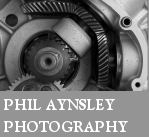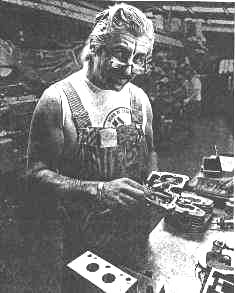




Ken Maely saw problems with Jawa's speedway frames and became interested in building replacement chassis parts. The Jawas, like most of their kind, carried the oil for their total-loss engine lubrication systems in their frame tubes. There was a small, threaded nubbin on the frame top tube, and you unscrew an aluminum cap to add oil. It was clever, but the Czechs got carried away with a passion for lightness and made the threaded nubbin out of tubing so thin that frame flex distorted it into an oval, causing the cap to jam on the threads. Maely's own frame looks like one from Jawa, and would take a Jawa engine, but had been refined in ways that included an answer to the oil-filler problem: the Maely version's threaded nub was made of thicker tubing, and the gussets around the steering head had been placed to avoid concentrating bending loads right at the oil filler opening.
Maely offered two reasons for having decided to create his own speedway engines: he was pretty sure that with a little help from his friends he could produce something better than was available from Europe; Ken also thought it would be fun to try Further, given his circle of friends, there was good reason for him to think he could top the Europeans. Harley-Davidson's Dick O'Brien, the Gray Fox of oval-track technology, Jerry Branch, the Portlow wizard, Jerry Magnuson, patternmaker extraordinaire, Tom Sifton and Art Early, Windy Briggs, Bob Milray and Irwin Moon were all at hand for Ken's project.
A common denominator among all the men named here was years of experience in racing, which meant a strong preference for simplicity; for the proven instead of what is only potential. Ken Maely's speedway engine was a reflection of these men's collective preference, though the actual design work was done by Milray, Moon and Maely.